
Alfred Gerald Caplin, better known as Al Capp, was an American cartoonist and humorist best known for the satirical comic strip Li'l Abner, which he created in 1934 and continued writing and drawing until 1977. He also wrote the comic strips Abbie an' Slats and Long Sam (1954). He won the National Cartoonists Society's Reuben Award in 1947 for Cartoonist of the Year, and their 1979 Elzie Segar Award, posthumously for his "unique and outstanding contribution to the profession of cartooning".
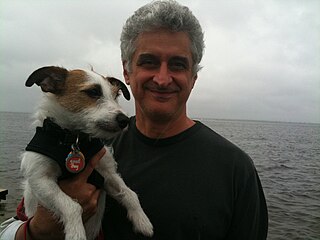
Patrick McDonnell is a cartoonist, author, and playwright. He is the creator of the daily comic strip Mutts, which follows the adventures of a dog and a cat, that has been syndicated since 1994. Prior to creating Mutts, he was a prolific magazine illustrator, and would frequently include a dog in the backgrounds of his drawings.
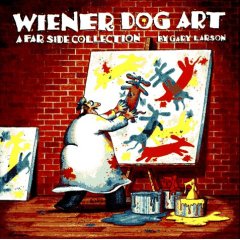
The Far Side is a single-panel comic created by Gary Larson and syndicated by Chronicle Features and then Universal Press Syndicate, which ran from December 31, 1979, to January 1, 1995. Its surrealistic humor is often based on uncomfortable social situations, improbable events, an anthropomorphic view of the world, logical fallacies, impending bizarre disasters, references to proverbs, or the search for meaning in life. Larson's frequent use of animals and nature in the comic is popularly attributed to his background in biology. The Far Side was ultimately carried by more than 1,900 daily newspapers, translated into 17 languages, and collected into calendars, greeting cards, and 23 compilation books, and reruns are still carried in many newspapers. After a 25-year hiatus, in July 2020 Larson began drawing new Far Side strips offered through the comic's official website.
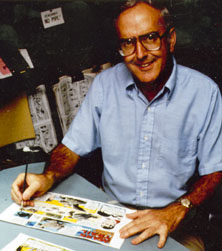
A cartoonist is a visual artist who specializes in both drawing and writing cartoons or comics. Cartoonists differ from comics writers or comics illustrators/artists in that they produce both the literary and graphic components of the work as part of their practice.

Shari Lewis was a Peabody-winning American ventriloquist, puppeteer, children's entertainer, television show host, dancer, singer, actress, author, and symphony conductor. She famously created and performed the sock puppet Lamb Chop for Captain Kangaroo in March 1956.
Randy Glasbergen was an American cartoonist and humorous illustrator best known for three decades of newspaper syndication as well as a freelance career. He produced the syndicated strip The Better Half from 1982 to 2014.
Herbert George Gardner was an American commercial artist, cartoonist, playwright and screenwriter.
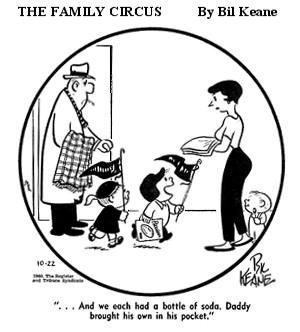
The Family Circus is a syndicated comic strip created by cartoonist Bil Keane and, since Keane's death in 2011, written, inked and rendered (colored) by his son Jeff Keane. The strip generally uses a single captioned panel with a round border, hence the original name of the series, which was changed following objections from the magazine Family Circle. The series debuted February 29, 1960, and has been in continuous production ever since. According to publisher King Features Syndicate, it is the most widely syndicated cartoon panel in the world, appearing in 1,500 newspapers. Compilations of Family Circus comic strips have sold more than 13 million copies worldwide.

Life in Hell is a comic strip by Matt Groening that was published weekly from 1977 to 2012. Its main characters include anthropomorphic rabbits and a gay couple. The comic covers a wide range of subjects, such as love, sex, work, and death, and explores themes of angst, social alienation, self-loathing, and fear of inevitable doom. The Simpsons began development as an animated adaptation for a segment of The Tracey Ullman Show, before Groening decided to adapt his character archetypes as original characters to avoid a loss of ownership rights to publish Life in Hell.
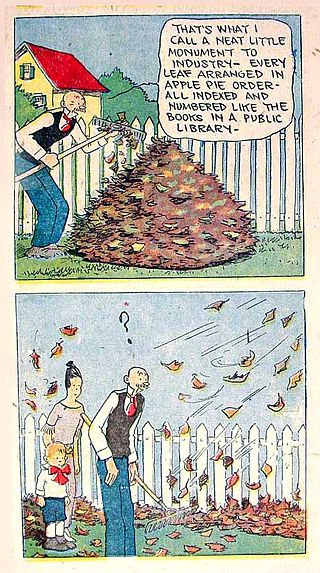
The Gumps is a comic strip about a middle-class family. It was created by Sidney Smith in 1917, launching a 42-year run in newspapers from February 12, 1917, until October 17, 1959.

Russell Kommer Myers is an American cartoonist best known for his newspaper comic strip Broom-Hilda.

John Burton Davis Jr. was an American cartoonist and illustrator, known for his advertising art, magazine covers, film posters, record album art, and numerous comic book stories. He was one of the founding cartoonists for Mad in 1952. His cartoon characters are characterized by extremely exaggerated anatomy, including big heads, skinny legs, and large feet.
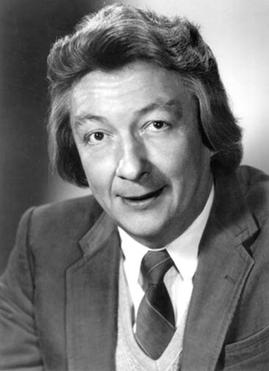
Thomas Albert Wilson, was an American cartoonist. Wilson was the creator of the comic strip Ziggy, which he drew from 1971 to 1987. The strip was then continued by his son, Tom Wilson Jr.
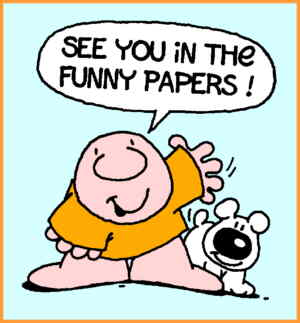
Ziggy is an American cartoon series about an eponymous character who suffers an endless stream of misfortunes and sad but sympathetic daily events. It was created by Tom Wilson, a former American Greetings executive, and distributed by Andrews McMeel Syndication. In 1987, his son Tom Wilson II took over writing and drawing the comic strip.

William Pierce Hoest was an American cartoonist best known as the creator of the gag panel series, The Lockhorns, distributed by King Features Syndicate to 500 newspapers in 23 countries, and Laugh Parade for Parade. He also created other syndicated strips and panels for King Features.

Joseph Patrick McEvoy, also sometimes credited as John P. McEvoy or Joseph P. McEvoy, was an American writer whose stories were published during the 1920s and 1930s in popular magazines such as Liberty, The Saturday Evening Post and Cosmopolitan.

Studio cards were tall, narrow humorous greeting cards which became popular during the 1950s. The approach was sometimes cutting or caustic, a distinct alternative to the type of mild humor previously employed by the major greeting card companies.
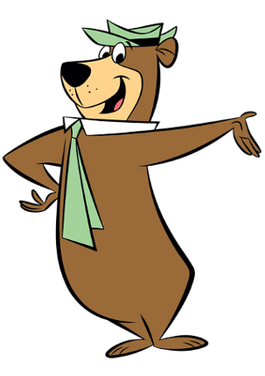
Yogi Bear is an anthropomorphic animal character who has appeared in numerous comic books, animated television shows, and films. He made his debut in 1958 as a supporting character in The Huckleberry Hound Show.

Hal Rasmusson was an American cartoonist best known for the comic strip Aggie Mack, about a teenage girl.
Brian Gordon is an American cartoonist, and creator of the webcomics Fowl Language, Frankie Fearless, and Chuck & Beans.

















